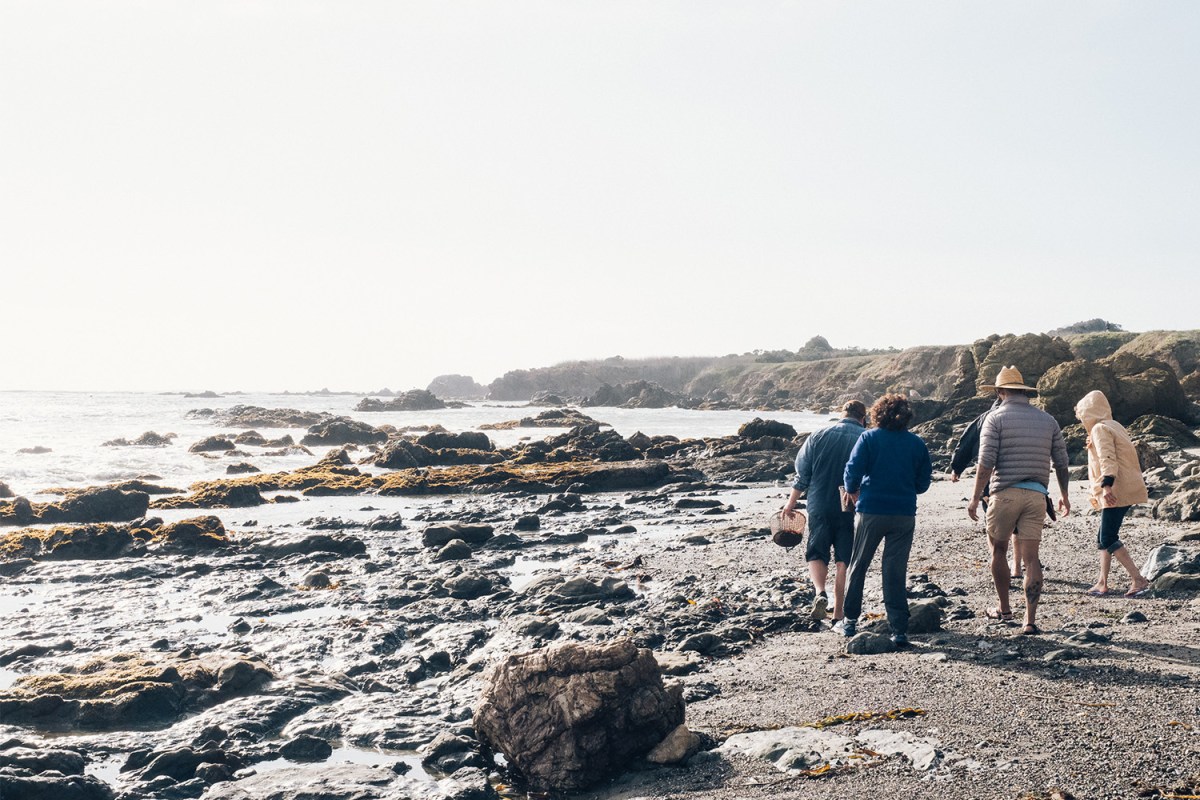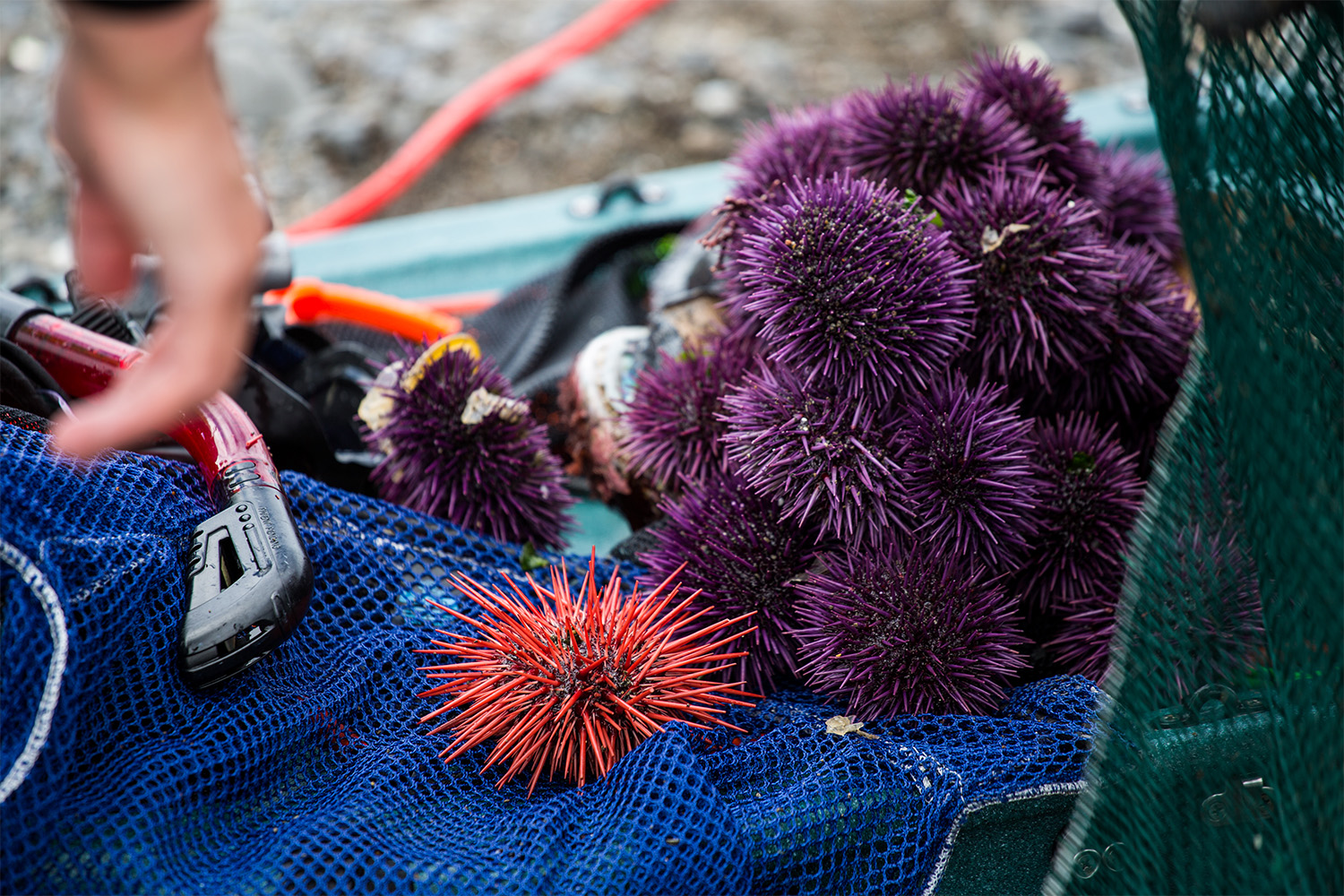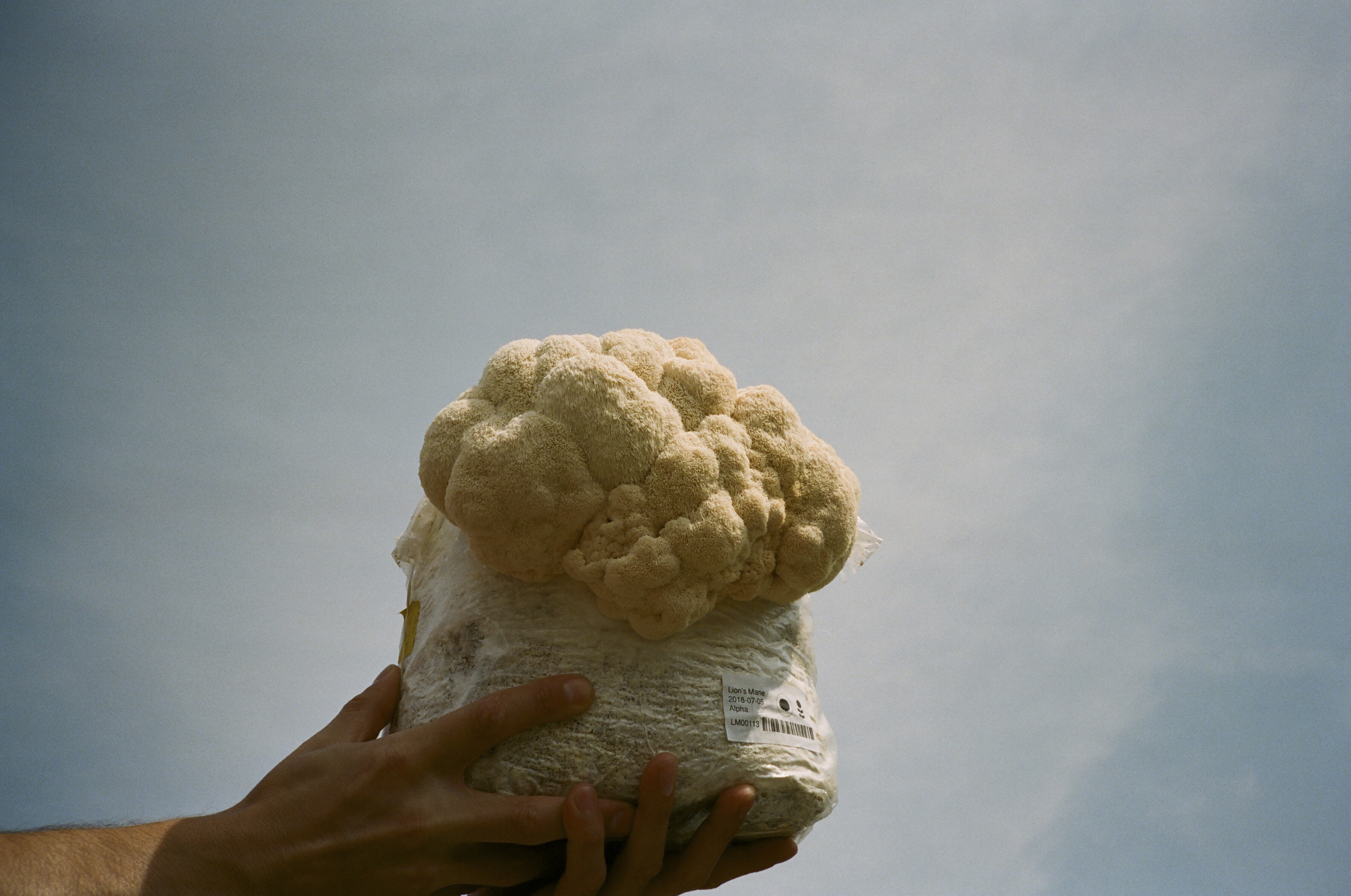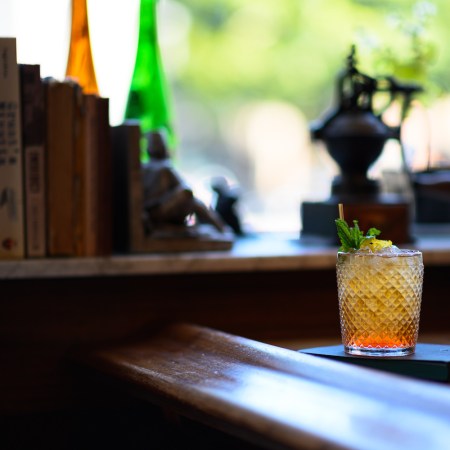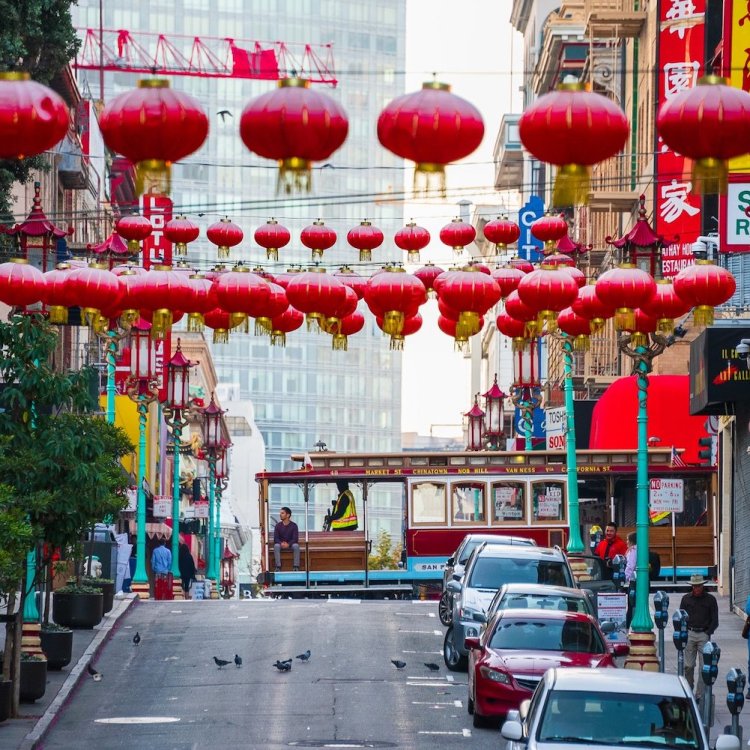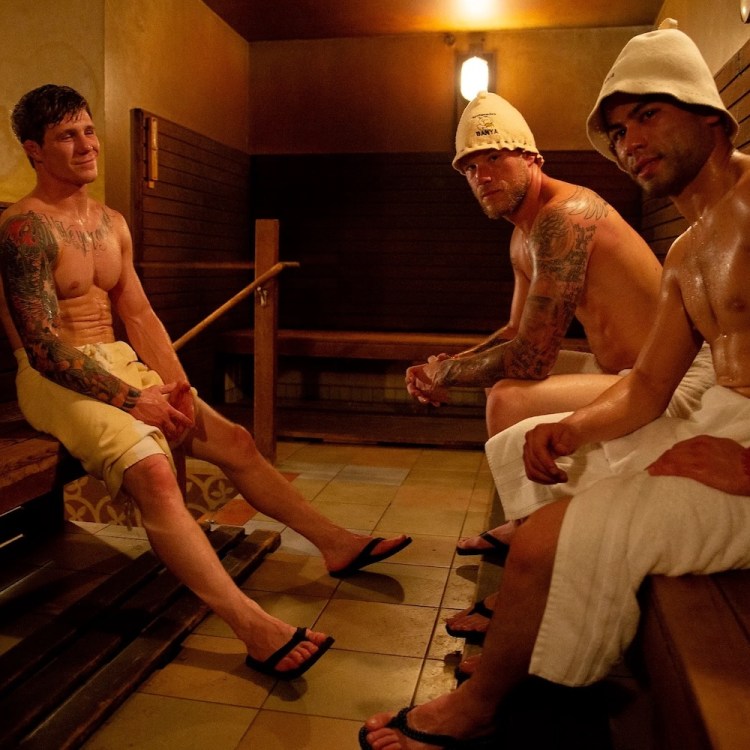I’m calf-deep in a tide pool at Estero Bluffs State Park, just north of Cayucos on California’s Central Coast. My eyes are down, on the lookout for a choice ribbon of kombu or ruffle-edged piece of sea lettuce. My guide, Spencer Marley of Marley Family Seaweeds, alerts me to a lime-colored shape beneath the surface, slowly moving away from shore. “There’s a great piece!” he says, and I enthusiastically slide my net into the water, scooping up a long but delicate-looking strand of Ulva, or edible green algae.
“Sea lettuce is my second favorite seaweed and what the Cantonese were farming here back in the late 1800s,” he explains, as he tears off a little piece for me to taste. It has a crisp, ever-so-slightly bitter but pleasing saltiness — a real Neptune’s kiss. Marley mostly eats it with eggs, chopping it up into omelets or frittatas, and says his kids also think it’s “freaking delicious.”
These days, chefs and bartenders love anything and everything hyper-local, so wild edible ingredients are still enjoying a major culinary moment. But with a chance to forage seaweed firsthand, I wasn’t sure quite what to expect. It turns out that the twice-daily high tides — which rip or “glean” pieces of kelp and other seaweed varieties from the rocks and push them ashore — do most of the work.
“See that really big one? There’s some nori right there!”
Marley commends my “netting intensity” as I scoop a less attractive dark green mass from the water. He tells me it’s what sushi rolls are wrapped with, except in its then-processed form. Mashed up and flattened into sheets, flavored with MSG and fried, those wafers are less “superfood” and more “seaweed potato chip snack,” he says. Looking decidedly less appetizing in its natural state, we add it to the basket for later.
Unlike mushrooms, Marley explains no seaweed species are toxic, although you should steer clear of old piles on the beach. People used to cut kelp to harvest it, but due to climate change and the urchin population exploding, he says kelp beds are 10% of what they were just five years ago. “They’re shrinking, so cutting is a no-no when foraging,” he says, “but if it’s just washed up or free-floating, you can take it.” Another of my netted treasures is a red algae called Turkish Towel. Marley says an organic compound called algin acts like a natural moisturizer making them great for exfoliating. “You dry these out but rehydrate them in the shower — basically, a natural loofah.”
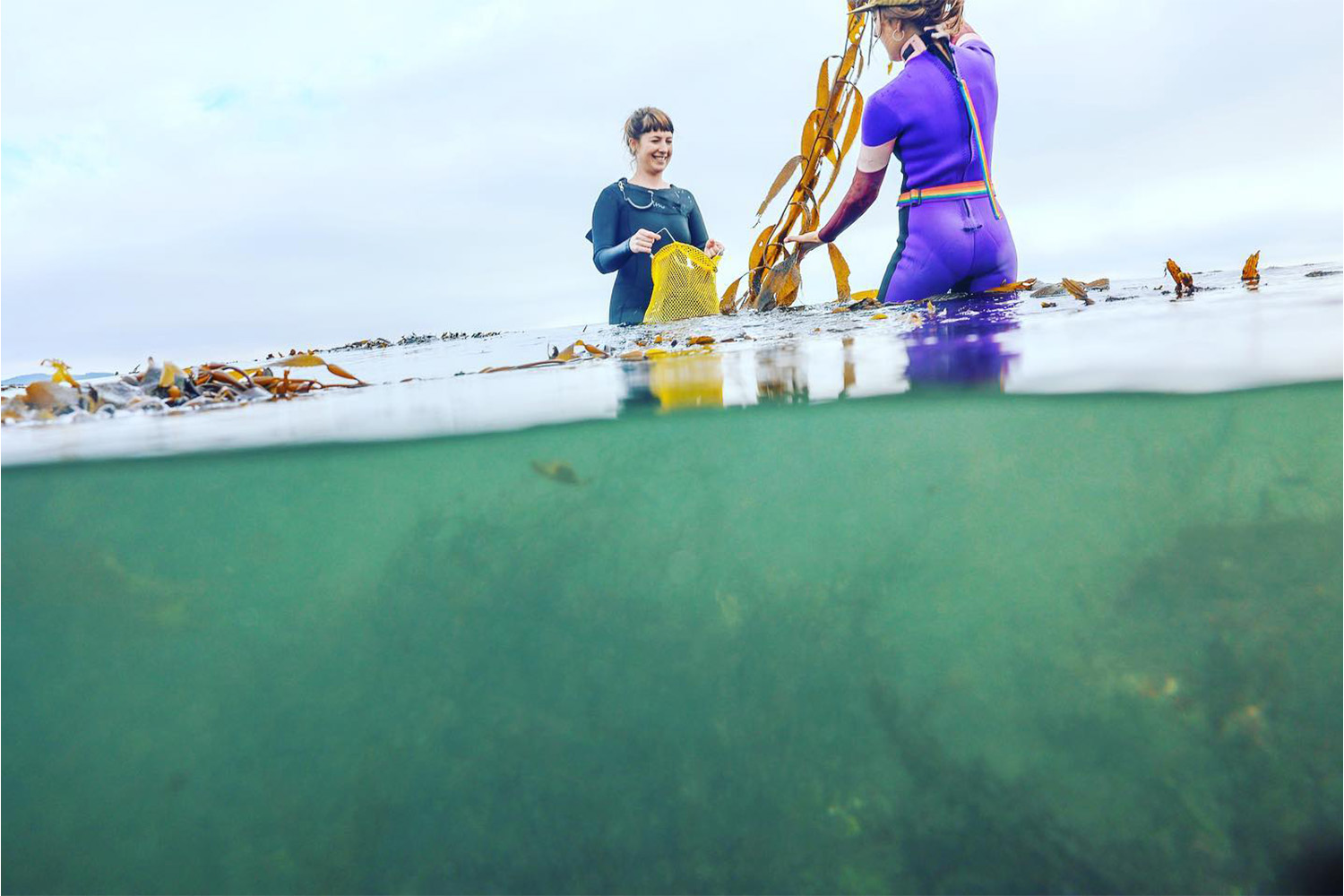
With end-of-day sunshine, still-blue skies and just a slight onshore breeze — net poised, eyes peeled — it’s all rather zen wading through the gradually incoming tide. Despite visiting this part of California for over a decade (both sets of my boyfriend’s parents live locally), I realized it’s the first time I’ve ever put my feet in the ocean here. Most people come to this stretch of the Golden State for the wineries in Edna Valley and Paso Robles, perhaps a tour of Hearst Castle, or to see the elephant seals at San Simeon a few miles north on Cabrillo Highway. It’s seen as a weekend getaway or a one-night stopover when road-tripping along the iconic Highway 1 in either direction.
But Marley is helping put SLO CAL on the map among a different demographic. The merchant marine turned commercial fisherman turned seaweed specialist started harvesting kelp to sell at local farmers markets before launching his foraging tour via Airbnb Experiences in 2018. It was a creative and informative way to share a love of the ocean and passion for seaweed with visitors — families, hip L.A. couples and Bay Area tech types — keen to experience a different side of the area. Part foraging experience, part Phycology 101 (aka marine algae science), each intertidal adventure wraps with a beachside bowl of ramen made with some of the just-harvested seaweed.
He chops an onion and some garlic, adds a dash of soy and a ribbon of kombu to flavor the broth. Kombu is used to make dashi, which forms the base of Japanese dishes like miso soup; when it turns from dark red to bright green, it’s time to remove and pop in the noodles. “Seaweed is the only vegetarian source of DHA and EPA,” Marley tells me, slicing up some wakame as a garnish. “It’s packed with iodine, iron, manganese and calcium, while red algae has 30 times the vitamins and minerals of any terrestrial vegetable. It’s never going to be the main event in cooking, but it’s a super healthy, sustainable source of nutrition and we should all be eating a lot more of it.”
Another local seaweed advocate is Melissa Hanson. The daughter of an “oceanographer and wetland scientist who fell in love while diving for lobsters in Florida,” she grew up crabbing and fishing on Chesapeake Bay in Maryland. “I spent a lot of time in the water gathering food with my family and learned how to feed myself from the ocean at a young age,” she says, “It’s a huge part of who I am.”
But it was randomly listening to a podcast about kelp farming and the environmental benefits of eating domestic seaweed that led to a pre-pandemic life and career pivot. Joining forces with Jules Marsh (a civil engineer and “like-minded mom who was also jazzed about seaweed”), they founded Kelpful in 2019. Creating a range of edible seaweed products using wild-harvested native varieties, including Sea Sprinkle toppings and an Immunity Broth mix, Hanson says they were excited to make $280 on their first day at the farmers market.
Kelpful has since expanded, adding a self-care line of bath salts and scrubs, although their latest food shop item, a popcorn, just became a huge hit. Between March and September, the ladies harvest around 100 pounds commercially each week at different spots across San Luis Obispo County. Nori and kombu are top for culinary endeavors, while kelp and rockweed are better for skincare.
While they’re currently stocked at SLO Natural Foods Co-op, SLO Provisions and SLO General Store, Kelpful products are also still available from local farmers markets. As for online sales, California has always been a good market, but they’re starting to ship more out of state to places like Missouri. Whether it’s as a skincare ingredient or food source, Hanson says the mission has always been to educate people about the benefits of seaweed. A previous job in sustainable farming introduced her to the new ways society is starting to look at food production.
“I’ve always been on a mission to maximize my positive impact in the world, and with land-based farming depleting soil and water resources, I believe the future of our food systems is in the ocean,” she says. Far from reducing resources, growing things like seaweed is a brilliant way to regenerate ecosystems, Hanson explains; certain species of marine algae can even reduce seawater acidification induced by climate change.
In October, Hanson, Marsh and fellow Kelpful founder Austin Rogers hope to begin a two-year study to collect data alongside the National Science Foundation and regenerative ocean farming pioneers Sunken Seaweed. Upon completion, the resulting environmental impact report template will bring their dream of creating a kelp farm in California — and those of like-minded others — one step closer to becoming reality.
“There’s a former abalone facility in Cayucos that we’re hoping to get granted access to with the long-term plan being to start a land-based seawater aquaculture system in partnership with Cal Poly University and nonprofit Harmony Coast Aquaculture Institute,” she says. “People should get ready to eat a lot more seaweed.”
This article was featured in the InsideHook SF newsletter. Sign up now for more from the Bay Area.
